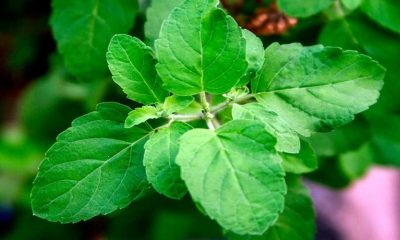Published
7 years agoon

Using a skin patch for the delivery of ‘exposure therapy’ is kind of beneficial to prevent peanut allergy among children but not as much as delivering small quantities of peanut through the mouth, shows a new study.
The study was conducted on 356 kids between the age group of 4 to 11 years, belonging to 5 different nations. All of the children had a mild peanut allergy. Some of them were asked to put on either a skin patch which consisted of a minor quantity of the peanut allergen. A few others were asked to wear a placebo patch which did not consist of peanut allergen.
The researchers later tested and examined the children through what is being called a peanut challenge. For the challenge, each kid was fed with a peanut dose, which started off with 1milligram and was gradually increased to 300milligram.
The results showed that around 35.3% of the children wearing the skin patch and 13.6% of the kids who were wearing the placebo patch appeared to benefit from the test and gradually began showing fewer signs of peanut allergy, said the lead author of the study, David Fleischer.
However, this still means that the peanut allergy patch didn’t aid the remaining two-thirds children who had been wearing it.
Notably, kids having experienced severe peanut allergy were not included in the study by the researchers on ethical grounds. One of the allergists who was not included in the trial thinks that more modifications might be required for the study.
As per Punita Ponda from Northwell Health in Great Neck, the study confirms the fact that the skin patch is much more effective to curb peanut allergy. However, the response rate isn’t as quick as it was expected previously, she added.
It is known generally that delivering ‘exposure therapy’ through the mouth is much effective than other procedures like the skin patch. However, the risks of sudden peanut allergies might rise in the case of oral therapy. Hence, Ponda remains hopeful that skin patch method would become a preferred option at some point in the future. However, details regarding the dosage as well as the expected rate of response is needed to be cleared first, she added.
The study was published in the JAMA Network Open journal on February 22 and was funded by DBV Technologies, a biopharmaceutical firm.
Furthermore, deputy editor of the journal, Jody Zylke wrote in an editorial that the skin patch therapy comes with theoretical benefits such as low risk any allergic reaction as well as user-friendliness.


Egg oral immunotherapy can help prevent egg allergy says study


Increased intake of onions and garlic may help reduce colorectal cancer risk


Early evening exercise doesn’t affect sleep and may also help lower appetite reveals study


Low calorie and high protein diet can help older adults with obesity lose weight


‘Holy Herb’ extracts promise future treatment for Alzheimer’s


Exercise can help balance our internal body clock says study










Disclaimer: Please understand that any news, guides or reviews found here are not a worthy substitute for medical advice. It is extremely wise to consult with a licensed healthcare professional or physician before adding any new health product or program to your routine. No supplements or services here are intended to diagnose, cure or prevent any disease.
Disclosure: Links located within this website may be affiliate placements where referral rewards will be generated if you make a purchase. This adds no additional cost to you and does not change the outcome of the research or review, but goes back into site upkeep and team sustainability.

